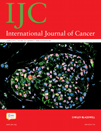Associations of insulin-like growth factor and insulin-like growth factor binding protein-3 with mortality in women with breast cancer
Abstract
Elevated circulating insulin-like growth factor-1 (IGF-1), a breast epithelial cell mitogen, is associated with breast cancer development. However, its association with breast cancer survival is not established. Circulating concentrations of IGF-1 are controlled via binding proteins, including IGF Binding Protein-3 (IGFBP-3), that may modulate the association of IGF-1 with breast-cancer outcomes. We measured IGF-1 and IGFBP-3 concentrations in serum from 600 women enrolled in the health, eating, activity, and lifestyle (HEAL) study, a multiethnic, prospective cohort study of women diagnosed with stage I-IIIA breast cancer. We evaluated the association between IGF-1 and IGFBP-3, and as a ratio, modeled using quintile cut-points, with risk of breast cancer-specific (n = 42 deaths) and all-cause mortality (n = 87 deaths) using Cox proportional hazards models. In models adjusted for body mass index, ethnicity, tamoxifen use at time of blood draw, treatment received at diagnosis and IGFBP-3, women in the highest quintile of IGF-1 level had an increased risk of all-cause mortality (Hazard Ratio (HR) = 3.10, 95% CI 1.21–7.93, p = 0.02), although no dose-response association was evident. The IGF-1/IGFBP-3 ratio, an indicator of free IGF-I levels, was significantly associated with increasing risk of all-cause mortality (HR = 2.83, 95% CI 1.25–6.36 ptrend = 0.01, upper vs. lower quintile) in a fully adjusted model. In conclusion, high serum levels of IGF-1 and the IGF-1/IGFBP-3 ratio were associated with increased risk of all-cause mortality in women with breast cancer. These results need to be confirmed in larger breast cancer survivor cohorts.
Abstract
What's new?
Despite known associations with breast cancer risk, whether high serum levels of insulin-like growth factor-1 (IGF-1) also iinfluences prognosis of the disease remains unclear. In this analysis of 600 breast cancer patients, increases in IGF-1 and the ratio of IGF-1 to its binding protein IGFBP-3 were associated with all-cause mortality. The relationship appeared to involve a threshold effect in which IGFBP-3 production eventually failed to keep pace with production of IGF-1, resulting in conditions favorable for tumor growth.




